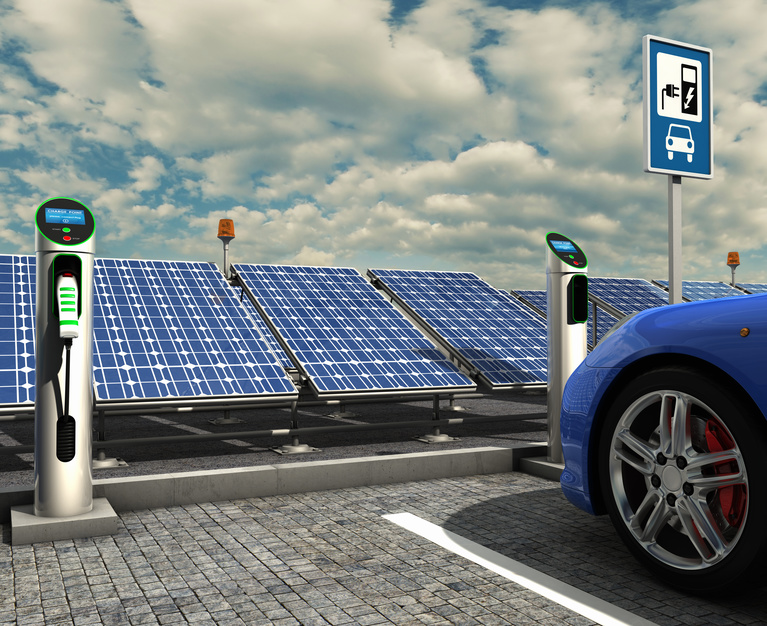
PV and EV: Electric car solar charge point
A month ago we posted an update to an article on the value of microgrids that was originally written six years ago. The update focused on the importance of microgrids in developing countries, where energy access is a huge issue and where there are still 1.2 billion people without access to electricity. It traced the growth of microgrids on islands, where hybrid renewable energy systems can replace expensive diesel generation and in other remote locations. Now we present you with Part Two of our discussion on microgrid value propositions.
Microgrids are capturing the attention of many different types of energy users in developing countries, including utilities, commercial customers interested in solar+storage, cities and other government entities who need resilient energy resources.
Whereas the most mature microgrid market is the off-grid use case, where many of HOMER’s 70,000 users are leading the transition, the experience we’ve developed in this niche is proving to be invaluable to new markets for microgrid services as well as grid-tied distributed energy systems:
Resiliency: Emergency & Mission Critical Services
Hospitals, police stations, data centers, telecommunications facilities and many other mission-critical corporate users have always had backup power systems, often with diesel or natural gas generators. Recent experience has shown that grocery stores, pharmacies, gas stations, water treatment, and many other facilities become critical infrastructure in an extended outage. In these cases hybrid microgrids that include renewables and storage can be a better option, both technically and financially:
- When planning for an extended outage where the refueling requirements for critical infrastructure will exceed available logistical capabilities
- When outages or “power quality incidents” are so frequent that the operation and maintenance of the diesel generator becomes a problem. This is the case in developing countries, but not typically a problem in the developed world.
- If organizations qualify for incentives for renewable energy or have sustainability goals.
Following a spate of extreme weather events, such as Hurricane Sandy, many government and non-profit organizations are now providing significant funding to develop microgrids to make local governments and their services more resilient to catastrophic disruptions to infrastructure. For example, New York, Connecticut, Massachusetts, Rhode Island and other states have funded pilot microgrid projects to provide distributed energy generation for critical facilities such as police and fire stations, prisons, water treatment plants, college campuses and other entities.
Campuses
University and corporate campuses, where many buildings have a common owner, are beginning to install microgrids. Microgrids can be economically attractive where they can utilize combined heat and power systems, or where there are attractive incentives for renewable power. Many universities have large endowments with a low cost of capital and a long term investment planning horizon, which gives them lower hurdle rates for energy saving investments.
Peak Shaving or Demand Charge Reduction
In the early days of microgrid experimentation, one California city that invested in a microgrid to improve its resilience realized that when emergencies weren’t happening, they could use the microgrid and its powerful batteries to lower electricity bills. That’s because up until very recently, electricity couldn’t be stored. It had to be used as delivered, even if that meant paying peak rates. This city charged its batteries with solar energy, then used the stored power when utility rates were highest. Now demand charge reduction or “peak shaving” is a goal of many commercial and industrial consumers of large amounts of electricity. In such a scenario, an investment in a solar-plus-storage system can pay itself off in no time.
Renewable Energy Grid Integration, Stabilization
Microgrids and grid-tied, distributed energy systems with storage and digital controls can help manage the variability created by high penetrations of solar and wind power. In Denmark, Germany, Spain, Portugal, California and Hawaii, new renewable deployments are already being curtailed because the grid is overloaded, creating dangerous over-currents and backfeeding (power traveling in the wrong direction). Microgrids or small, grid-tied networks with storage and load management provide a way to use renewable power on-site and deliver more controlled and stable power to the larger grid. Ultimately, by improving power management, these systems can enable the addition of greater amounts of distributed renewable energy to the overall power mix.
Benefits of Microgrids for Utilities
Microgrids that integrate renewable energy and storage can help utilities defray the cost of transmission upgrades and/or construction of special power plants that meet peak demand or “peaker” plants. Utility-scale solar-plus-storage projects that replace more expensive grid upgrades are already underway in New York and California. Microgrids can also help utilities manage variable generation resources such as solar and wind better, using storage instead of wasteful curtailment strategies to prevent excess renewable energy from overloading the grid. Small utilities – for example municipal utilities that pay demand charges to larger wholesale electricity providers – can cut costs by installing Distributed Energy Resources (DERs) including storage, and shave their peak demand.
Ancillary Services
Ancillary services include various operations that that ensure the secure and stable operation of the grid. These include frequency and voltage controls, power dispatch and scheduling, and the provision of spinning reserves, to mention a few. While ancillary services have typically been provided by utilities or grid operators, advanced digital controls have enabled some of these functions within microgrid or grid-tied DER infrastructure, making it possible for new players to provide – and sell – these benefits. Utilities can invest in their own distributed energy resources to provide ancillary services, or buy them from customers.
Energy Arbitrage
As storage prices decline, and as utilities respond to the changing energy landscape with variable, time-of-use pricing, it is becoming possible for owners of renewable-plus-storage facilities to exploit price differences and trade in wholesale energy markets. Although it’s enormously complex and requires exactly the right circumstances to be profitable, energy arbitrage, or trading enabled by distributed energy, could become a more common practice.
Electric Vehicle Integration
Electric vehicles are another future market driver that has synergy with microgrids. Electric vehicles represent a combination of distributed storage and generation that can serve as both a backup power system and a means of stabilizing variable power additions to the grid. Called “vehicle-to-grid” or V2G services, EVs can communicate with the grid to provide electricity when required, or function in demand response mode, curbing their power requirements when resources are required elsewhere.
The Future of Microgrids
While it’s impossible to predict the specifics, we can safely assume that the role of microgrids – and grid-tied networks of distributed energy resources – in renewable energy integration and grid stabilization will only continue to evolve in importance, and that’s a good thing. Microgrids are playing an important part in the greening of our energy generation resources, and in improvements to the reliability and resilience of our electric grid.
See Microgrid Value Propositions: Part One
Whether we are designing, developing, financing, building or marketing renewable energy, storage systems or microgrids, we are all contributing to a revolution in the energy marketplace. If you want to learn more about microgrids, we welcome you to try some experiments with our free online tool HOMER QuickStart. Built upon the HOMER engine, HOMER QuickStart is a good way to get introduced to the capabilities of our full-featured microgrid modeling and simulation software HOMER Pro.


Expanded use of micro grids in developed/industrialized countries can help to continue bolstering the case for expanding mini-grid use in developing countries where there is still strong focus on grid-tied power development.
Many of us advocate that there is space for both bottom-up mini grid and top-down grid tied power. Use cases and integrated planning are key.
Uses in this article show that mini grids arenât just a poor manâs option for electricity
Thank you for your insightful comment. Very true.
Hello,
Today I think that the Microgrid would be an alternative in grid investissment in developping countries. But my question is, when this will be economically feasible, in 10 years ? or 20 years ?
Thank you
Hello Moulaye,
It is economically feasible now, but it depends on the circumstances. This is a complex question because many factors can influence the costs: What is the distance from the main grid, so how much would extensions cost? How reliable is the main grid? What is the cost of the support infrastructure for the microgrid? Each case would have to be evaluated individually, but that is one of the advantages of using HOMER Pro: You can get good financial information on the costs of your microgrid project and that should help you compare the options. Good luck!